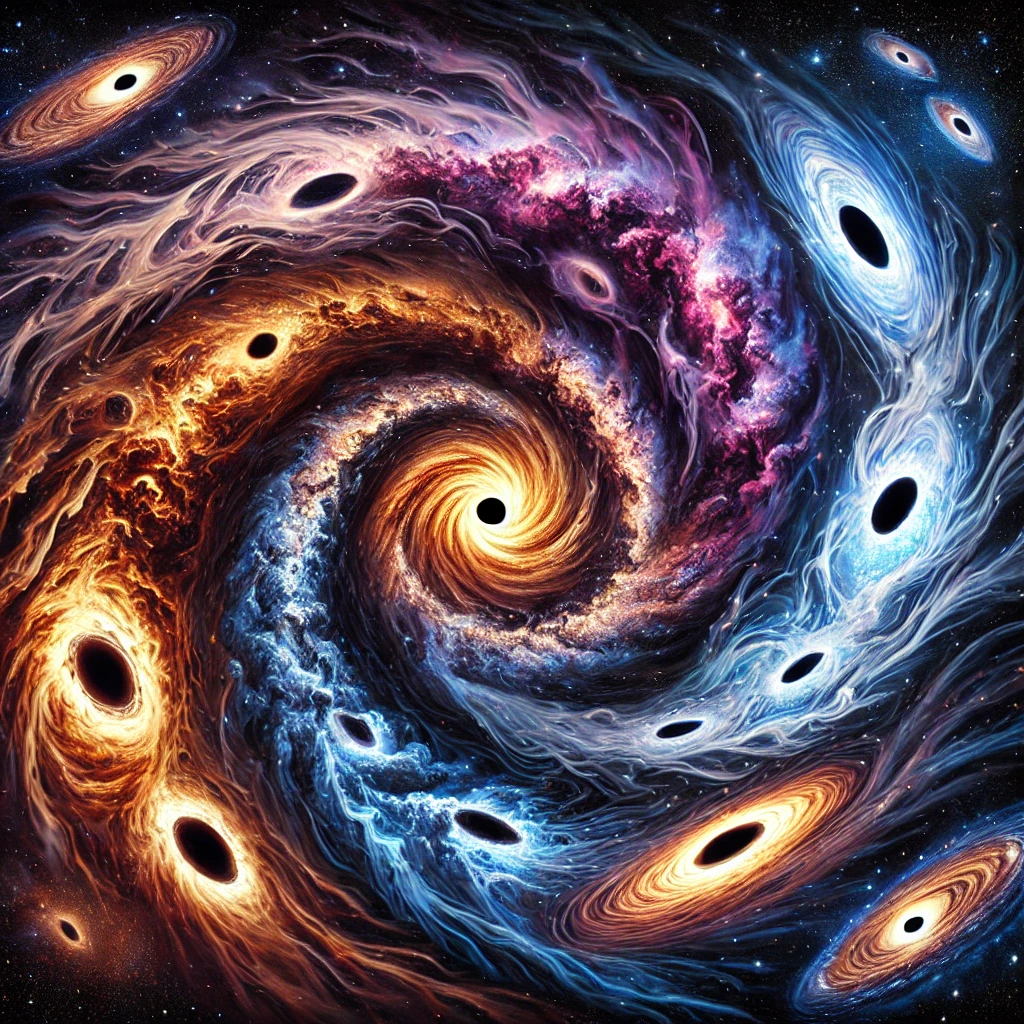The cosmos is a vast and enigmatic realm, and humanity’s understanding of it is ever-evolving. Today, I invite you on a journey of exploration, beginning with the fundamental question: What is the atomic structure of Hawking radiation? As we venture deeper, we’ll follow the thread of thought, connecting the microcosm of quantum phenomena to the ultimate fate of the universe, culminating in a bold reimagining of how the cosmos might renew itself.
The Atomic Structure of Hawking Radiation
When we think of atomic structure, we imagine electrons orbiting nuclei, a foundational image in chemistry and physics. But Hawking radiation operates on an entirely different plane. It is not an arrangement of atoms but a phenomenon emerging from the quantum foam of spacetime itself. Near the event horizon of a black hole, pairs of particles and antiparticles spontaneously appear due to quantum fluctuations. Ordinarily, these pairs annihilate one another almost instantly, leaving no trace. However, at the edge of a black hole’s event horizon, the immense gravitational forces can separate these pairs. One particle may fall into the black hole, while the other escapes, manifesting as Hawking radiation.
This radiation is thermal, emanating from the black hole like a faint glow. As the black hole loses energy through this process, it gradually evaporates, shrinking until it vanishes completely. What remains is a dispersal of particles and energy—a profound act of entropy redistribution. This revelation about the nature of Hawking radiation, that it is not composed of atoms but of escaping particles, leads us to deeper questions about entropy, the universe’s ultimate fate, and the mysterious dance of creation and destruction.
The Recyclability of Atoms
If Hawking radiation is a process of cosmic decay, where does it leave the atoms that compose us? Assuming our atoms avoid the gravitational pull of a black hole, they are destined for continual recycling within the universe. On Earth, atoms pass through the cycles of life, death, and rebirth, becoming part of plants, animals, and ecosystems. Beyond our planet, atoms endure through geological and stellar processes. They may be scattered into space as cosmic dust, integrated into new stars, or even forged into heavier elements in the crucibles of supernovae.
This recycling of matter is an awe-inspiring testament to the universe’s creativity. Yet, it raises a haunting question: What happens when all processes cease, when even the atoms themselves face an ultimate end?
The Heat Death of the Universe
Cosmologists often speak of the “heat death” as the universe’s final chapter. This concept envisions a time when all energy is evenly distributed, leaving no gradients to fuel processes. Stars will extinguish, black holes will evaporate, and all matter will decay into low-energy particles. Hawking radiation, once a mere whisper of a black hole’s demise, becomes the last active process in a universe nearing absolute entropy.
The heat death paints a bleak picture—a cosmos cold, dark, and silent. But is this truly the end? What if the nature of the universe isn’t as static as we assume? What if the universe’s expansion, believed to continue indefinitely, could one day reverse?
Rethinking the Universe’s Expansion
The prevailing view holds that the universe is expanding and will never stop expanding, driven by dark energy. But this belief, though grounded in observation, is not immutable truth. The cosmos is vast beyond comprehension, and our observations are confined to the “observable universe.” It is possible that the universe may reach a limit to its expansion, halting and then starting a new dynamic cycle where our observable universe reaches equilibrium with unobservable regions, reversing its process.
Consider another possibility: the observable universe might be part of a larger cosmic bubble. Within this bubble, regions could behave differently, with some expanding and others contracting. This cyclical dynamic would mean that the universe is not a linear progression toward heat death but a pulsating entity, where parts contract while others expand, forming a grand equilibrium over cosmic timescales.
Hawking Radiation in a Cyclical Universe
In such a scenario, Hawking radiation becomes a key player. Imagine that as parts of the universe contract, the radiation emitted during black hole evaporation doesn’t merely dissipate into oblivion. Instead, it could flow into expanding regions, interacting with the remnants of previous cycles. In this view, Hawking radiation is not the end but the seed of new beginnings.
Could this radiation, dispersing energy across the cosmos, act as the catalyst for the next Big Bang? Perhaps as the universe reaches a state of equilibrium between contracting and expanding regions, Hawking radiation concentrated in our observable bubble could ignite a process of particle formation, triggering the birth of new structures.
The Renewal of the Universe
This speculative vision transforms Hawking radiation into the ultimate recycler, weaving a thread through the cosmic epochs. Each cycle of expansion and contraction becomes a chapter in an eternal story. The universe, far from succumbing to entropy, renews itself in an endless dance of destruction and creation.
Could life, too, emerge anew in such a framework? Life as we know it depends on energy gradients and complexity, which might initially seem absent in a uniform, low-energy state. Yet, if the contraction phase concentrates energy and matter, the conditions for complexity and, potentially, life could reappear. Hawking radiation—once seen as a whisper of decay—might become the spark of vitality in a future cycle.
Conclusion: An Eternal Dance
The journey from the atomic structure of Hawking radiation to the universe’s renewal takes us through profound questions about entropy, cosmology, and existence. While current models suggest a bleak, ever-expanding universe, alternative ideas invite us to envision a cosmos where cycles of expansion and contraction sustain an eternal rhythm.
Perhaps Hawking radiation, emerging from the edge of black holes, is more than a remnant of decay. It may be a bridge between epochs, a harbinger of rebirth, and a reminder that in the vastness of the universe, endings and beginnings are inseparably intertwined. This vision of a cyclical universe, perpetually renewing itself, offers a poetic and hopeful counterpoint to the narrative of inevitable decline. It suggests that the cosmos, like life, might always find a way to begin again.
If the universe behaves as most things in the universe do and that is a cycle of birth, death, and renewal, then perhaps the universe can be truly eternal and infinite. If it is, our atoms could someday recombine in exactly the same configuration as they are today, and you may breathe life once again in another time, in another place. So as one living being to another, I bid you good journey. May our atoms cross again.

